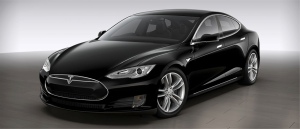While the Prime Minister, Tony Abbott, has been extolling the virtues of coal for humanity and demonstrating, yet again his complete lack of understanding of the dynamics of climate change, there have been a couple of news items that spell long-term trouble for the Australian economy and in particular the coal industry
Lockheed Martin Corp.’s secretive Skunk Works unit, which designed the U-2 spy plane and F-117 stealth fighter jet, is developing a reactor to harness nuclear fusion, the process that powers the sun. The reactor would be small enough to fit in a truck and generate enough energy to light 80,000 homes, the Bethesda-based company said Wednesday.
“They are smaller, so the amount of radioactivity contained in each reactor is less,” writes John Wheeler at This Week in Nuclear. “So much less,” he writes, “that even if the worse case reactor accident occurs, the amount of radioactive material released would not pose a risk to the public.” 
Australia is still some no way near a universal acceptance of nuclear power generation. However, with safer and cheaper reactors available and the consequences and effects of burning coal for power generation becoming more severe, public opinion could very easily shift.
There are also significant improvements in the development and production of renewable energy storage.
Researchers at MIT are developing a new device that has the potential to hold as much energy as a conventional battery but could be recharged in seconds rather than hours, would last almost indefinitely, and won’t mind the cold. The device could prove the first economically viable alternative to today’s battery. It could one day yield a practical all-electric car and provide electricity storage critical to using intermittent energy sources such as solar and wind.
This technology is being picked up by entrepreneurial energy companies.
SolarCity, the nation’s largest residential solar installer and financier, is coupling Tesla’s battery-based energy storage hardware with its rooftop solar systems.
Palo Alto-based Tesla which currently manufactures electrical cars, is ramping up manufacturing to reach the full capacity of its Fremont factory, with the goal of making half a million cars a year by 2020. To drive down the cost of batteries, it plans to break ground this month on a massive “gigafactory” for battery production that is expected to produce more batteries than currently are being made globally. The batteries are not just for Tesla’s cars but also for Tesla’s product line for stationary storage.
New formulation leads to improved liquid battery. Cheaper, longer-lasting materials could enable batteries that make wind and solar energy more competitive. Funding for the project is being provided by Bill Gates.
The world is moving towards a seismic shift in the way it generates, stores and uses energy. And there are no indications that the smart money or the clever thinker is backing coal.
There are also signs of the world is moving away from dirty coal, admittedly not the kind that Australia produces but the Chinese, who are amongst the biggest consumers of Australia’s coal, are showing signs that they are concerned about the polluting effects of this fuel and moving towards less polluting and cheaper energy sources.
When the technology, either solar storage or efficient and safe nuclear generation make the technological jump to cheaper and easily distributed production capabilities, sales of coal will move to zero as countries shift to clean a more efficient sources.
We’ve always known that this would eventually happen.
But now, it appears that the technology is a point where it’s likely there will be what is termed a “catastrophe shift” in both generation and storage. Catastrophe shifts are not always bad, they are simply large and rapid changes in any system state. The problem with catastrophe shifts is that they are difficult to predict, (like scientific breakthroughs or accidents) and even more difficult to predict and plan for.
Small shifts in demand and production for coal is already producing severe effects on some NSW towns which are dependent on coal industry. The effect of the collapse of demand will be catastrophic (in the very bad sense). The problem is that the ” head in the sand” attitude of the Abbott government means that there will be absolutely no planning for the situation and the social and economic consequences will be far reaching and severe.


